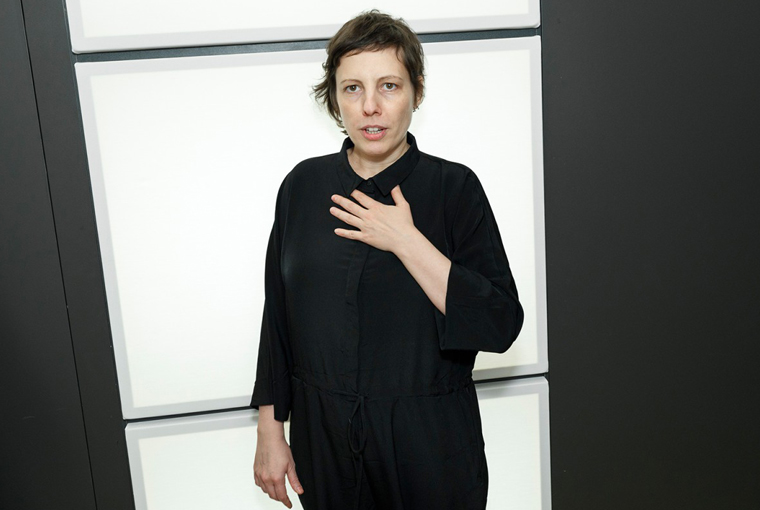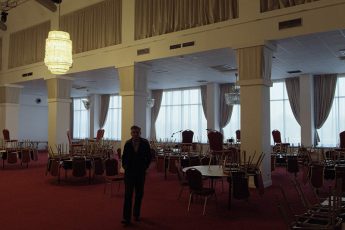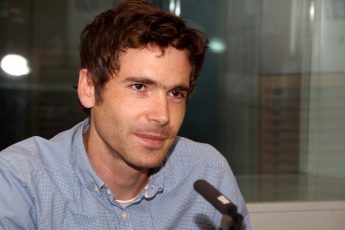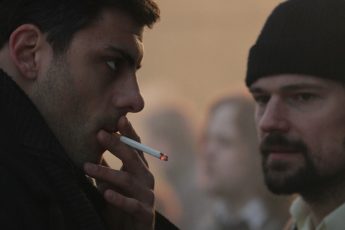
We met director Adina Pintilie to speak to her about “Touch Me Not”, her experimental portrait of intimacy which won her the Golden Bear for best film at the 2018 Berlinale. Pintilie speaks about her aims and methods in approaching her project, conflicting views of intimacy, and interrelations between form and subject matter.
I understand this film started from a very personal interest but you went on to include all these different characters, so how did this collaboration take shape?
I even say it in the film at some point, but when I was 20 I thought I knew everything about how love should function, what intimacy is, what beauty is, all that kind of stuff. Over the next 20 years, all these clear ideas just got blurry and confused, so basically the project started from my own curiosity and from my own need to relearn and to discover how people experience intimacy. Because human nature never fails to amaze me. I find people fascinating, but at the same time really unpredictable. So, this was the drive – my need to understand and my curiosity – and we started in 2013. The financing of the project started back in 2011, and was quite difficult because of the fact that it explored a taboo area and because it didn’t obey the classical rules of fiction. So it took a while, but finally we got the financing that allowed us to start the actual process in 2013, meaning it lasted almost 5 years. First there was a year and a half of casting research, which wasn’t like regular fiction casting but more like searching for like-minded people who would like to explore this area. It was very important for me that they had a powerful personal motivation for being part of the process, and that they wanted to share something with the viewers. I found these people, and then we started working with a constant mixture of fiction and reality, so with a combination of their private materials and fictional proposals from me.
How was the working process structured?
We started to work with a diary, and we began working long-distance, discussing stuff from France, Iceland, the UK, Australia, Germany, Bulgaria and Romania. It’s really an international co-production! At the beginning they had homework and had to keep a diary on camera about a certain theme connected to intimacy. Then they would send me the materials and afterwards we would have recorded Skype conversations about that. Then new homework would come based on these new themes, so there was an on-going process of getting familiar with the camera and working with your own personal things in front of the camera, and I think this preparation was very important. Afterwards, we had this official shooting period alternating with editing, so more like in documentary. During this time, we basically created a sort of home for the characters, where the film crew would come and visit them. In the film, it’s very important that you can always sense the apparatus, the camera, and the fact that it’s a film is present all the time. This is also the purpose of the beginning and the end – it sets the frame for you to look at the research. You are not allowed to go into the suspension of disbelief. This isn’t a film where you can create a bubble of fiction and identify with characters, so it’s very important to always be aware that this is a film and that these people are offering you very special access to their private lives. The camera and the film crew are the channel, the bridge of communication between the viewers and the characters. That’s why the fourth wall is often fluid and permeable, with the characters talking to the lens and to the audience. This is an important element structurally and conceptually, and it informed the entire process.
So that aspect was there from the beginning?
Yes, because the film is not only about our journeys of self-discovery and discovering the world and how people experience intimacy, it’s also an act of communication with the viewer. The character communicates directly with the viewer and invites them to a dialog, as a sort of a mirror. Like Christian says at one point, “I would like to challenge the viewer’s perspective on intimacy, to open their minds a bit to show them that there are other possibilities, not only the normative ones.” Also, that there are other possibilities of beauty, different bodies, different ways of experiencing intimacy that deviate from the norm, and that they are equally valid. So, fiction functions more like a framework, a safety net that allowed us to work with real, authentic encounters between people. For example, the workshop is based on a real one. There is this trainer in Germany who works with these kinds of methods. She’s not the only one, it’s called an emotional anatomy workshop. We started from this idea, and we designed an adaptation of it for the film. Within this context, which has certain exercises and certain rules, we bring these characters, who are real characters with interactions that are born out of that. The relationship that grows between Christian and Thomas is authentic. This was the way we worked, basically. We created a sort of laboratory in which we worked with the material of the characters.
And this concept of a laboratory also influenced the aesthetics…
Because we were working with this element of unpredictability that is brought in by including reality in the process, there was always a tension between the need for structure, with very precise framing and lighting. These are limitations that come when creating that precision, because we could never predict what was going to happen. We would stick to our visual approach up to a limit, and from that limit on you couldn’t control stuff anymore. For example, when you have the first meeting between Laura and Seani, in the beginning it was very important to keep the freshness of the first encounter. Seani didn’t know anything about Laura before, he works based on body to body intuition, so he immediately spotted the area to work with, and in the beginning, we didn’t know what was going to happen, so we needed to create a safety area in which you could see their first movements. I mean this in terms of image, but it also applies to sound, to the work with the actors, with the interaction and the topic of exploration.
So in the beginning there was a first round, so to say. I wouldn’t say “take” or “rehearsal” because nothing was repeated. There was the first encounter, and within it I identified what would be interesting to explore more in-depth, because what’s interesting for all these characters and what connects them is basically a journey towards inner freedom, and in the film these people are struggling to break free from their inner selves. This is the paradox of modern days, that you have so much freedom to do or say so much compared to different periods in history, but you have so many inner borders that you must fight against. So the journeys in the film are towards inner liberation, and this was the red thread that we followed for each of the characters and it was the focus of the meetings. For example, with Hannah and Laura, it quickly came out that the most relevant area of interaction was the fact that Hannah has a very loving relationship with her body. She has a whole mythology with names and memories and stories about her breasts, while at the same time knowing that her body is very far from any norm: “It’s my imperfect body, which I love and which I have a close relationship to.” For Laura, this kind of experience was really transformative, which is exactly what I was looking for. The way that Hannah relates to her body has an impact on Laura’s journey, so then I know that this is relevant and the next time we go further into this relationship with the body. So that guided the process and also influenced the framing, since then I knew what kind of movements there would be, that we shouldn’t get too close at the beginning, and it shaped the interaction between them. It informed all the layers – the set design, the lighting, the lenses. Everything was informed by this clash.
The film is set in this kind of constructed non-place that is very international, but English is the lingua franca. What was the reasoning behind those choices?
We were very careful not to bring national specificities into the process, because I think we’re talking about something that is close to all of us no matter which country we come from. Unavoidably, by bringing people from different national backgrounds you will feel the luggage there. Some people who come from different countries have a different approach to borders and to touch, and to relating and negotiating. It is there, but I didn’t want to get into the specifics of nationality because in the film we don’t get into general statements, it’s supposed to be about individual experience of intimacy, which doesn’t depend on a national identity. It’s implicit but it’s not relevant. So I decided to stay with the broken English that we all use, with all our accents. We’re lucky that English exists in the world and helps us to communicate.




Leave a Comment